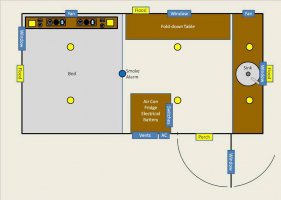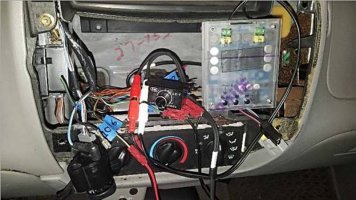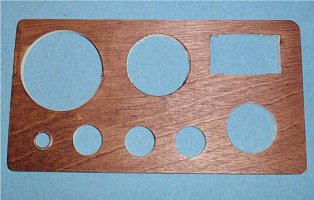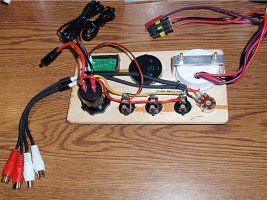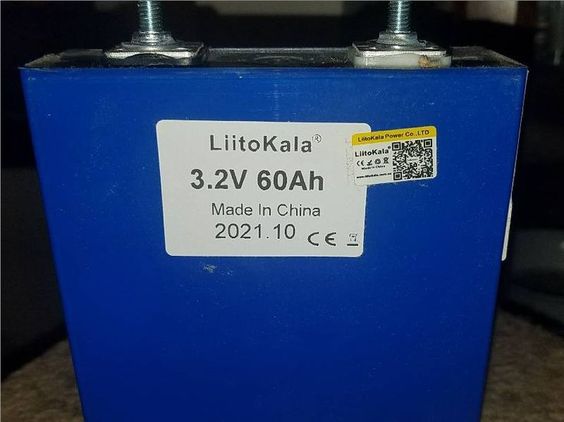Thanks guys!
The two solar panel banks would be 5 parallel 100W panels, so 41.7A. I just rounded down to 40A. I figure I'm not likely to get 100% power from the panels anyway. And I found some that will fit 10 on my roof. My solar charge controllers are boost converters and can only do 600W each, so putting them in two groups will keep each controller well below it's limit.
All the DC appliances I've seen are way to expensive for me. But I will keep things accessible for future upgrades and repairs.
The manual off switch from the truck is a good idea. In fact, I've already designed how the power will come from the truck:

Still a work in progress. I don't know the length of wire I'll need or what gauge to help limit voltage drop. But the power will only be available if the truck is running, and if I have the switch (which will be on the dashboard) turned on. I also don't know how many Amps I want. Right now I'm guessing 5A wouldn't be too hard on the alternator. Probably won't charge the battery at all, but will send a little power to help run the fridge.
The cells I'm looking at are 60Ah, LiFePO4, but the spec sheet recommends only discharging to 80%. Or maybe they mean 80% discharge would be the bottom voltage of 2.5v. I'm not sure, so I'm assuming only 48Ah to be safe. At 3.2V nominal they would be 153.6Wh each, and 8 of them in any configuration would be 1228.8Wh. These cells are cheap enough that I could buy another 8 in the future and make an 8s2p battery and double the Wh, if I find I need it.
One guy just made a trailer with a 600Wh battery, and runs his A/C and a fridge and a stereo. I have no idea how much power stereos use. He says his solar powers most everything, and the battery only discharges very slowly. He's in Florida though, and I seriously doubt I'll get that much sun here in Washington, LOL.
A lot of the time, we should have access to grid power, but I'd like the option to have a day or 2 without it so we're not totally dependent. In that case, I'd probably use the A/C very sparingly, and we'd have a small generator if things got desperate.
The USB ports could run on as high as 30V, so they could be run directly off the battery like my CPAP will be. Depends on how I do the switching. I designed this console thing to go above the bed. A couple of reading lights, USBs for phones and whatever, 12V socket for my wife because she has this tablet thing for work that doesn't work on normal USB ports. It has to have its own proprietary thing. And a 24V socket for my CPAP.

I'm also trying to keep as much of the electrical stuff centralized as I can. A lot of it will fit in this cabinet:

All the AC stuff will be in the cabinet except for an outlet in the kitchen for the microwave. Everything is still estimated though, and anything could change. I need to get hold of an actual trailer before I can start to be sure of anything. I'm hoping to hear from a company tomorrow...
